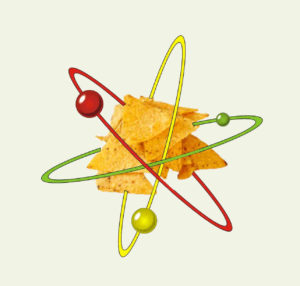When I was a kid, I thought I knew what a food scientist was. I mean, the words were pretty simple:
food noun \ ˈfüd \ – Any nourishing substance that is eaten or drunk which sustains health, provides energy and promotes growth.
scientist noun \ ˈsīən(t)əst \ – a person who is studying or has expert knowledge of one or more of the natural or physical sciences.
So, a food scientist must study nourishing substances that are eaten to sustain health, provide energy and promote growth. It turns out that’s really what a nutrition scientist does. Food scientists are more concerned with how to process foods for convenience, shelf life and addictiveness.
Michael Moss is an investigative reporter for the New York Times. He went deep into investigating the food industry, focusing on “food science,” marketing, and executive decision making. He wrote a great book called Salt Sugar Fat: How the Food Giants Hooked Us. There’s a nice summary of the book on the New York Times web site. The How Junk Food Works episode of the Stuff You Should Know podcast also covers some of the topics from Moss’s book.
Understand that humans have not evolved much over the last 10,000 years, but society and technology certainly have. We evolved under conditions of scarcity. Fats have more energy per gram than proteins or carbohydrates. If food is scarce, fats are the most valuable food source. Sugars provide the fastest energy boost. In nature, outside of ripe fruits, sugar is rarely concentrated. Salts are essential for metabolic functions. In nature, salts are scarce. But we no longer live under conditions of scarcity. We live in times of plenty. The food industry, being motivated by profits, is interested in selling us as much food stuff as it can. And it’s more than willing to target the primitive cravings that our brains have for fat, sugar, and salt.
Let’s review some food scientist vocabulary:
Bliss Point
We all understand that people crave fat, salt and sugar. It makes sense. For the vast majority of human evolution, we dealt with scarcity and seeking out foods that are high in fat, salt and sugar helped us survive. These tendencies are now in our DNA. But everything can be overdone. At some point, recipes become too sweet, too salty or too greasy. The bliss point measures ingredient levels to find the level which is perceived to be the most enjoyable.
Conjoint Analysis
There’s a lot more variables than fat, salt and sugar. There’s all sorts of flavor and texture and color variables. Even portion sizes and packaging makes a difference. Food scientists will perform studies on large numbers of people in disparate geographies, having the people taste varients of a product with dozens of controlled variables. Using computers to do statistical analysis of this data is called Conjoint Analysis. The goal is to find the value for each variable that, in combination, produces the most desirable reaction. It’s maximizing bliss across many factors.
Sensory Specific Satiety
Studies on the eating habits of US soldiers and the MREs (Meals Ready to Eat) that they ate in the field revealed this concept. The soldiers preferred the most flavorful options, but they grew tired of them after a few repetitions, to the point that they would skip meals. On the other hand, they never preferred white bread, but they never got sick of it. A goal of food scientists is to produce things that are flavorful, but there are no specificly identifiable flavors to trigger satiation. Doritos are a prime example.
Mouth Feel
Chef’s are well aware of the importance of mouth feel. It’s every bit as important for processed food. While it is difficult to define, having a pleasant mouth feel is one of the most important aspects to successful processed food products.
Vanishing Caloric Density
If a food melts in your mouth, it totally tricks your brain. Your brain thought it was getting some food, then its not there. Your brain doesn’t think you got any calories, so it wants you to eat more. Cheese puffs are the ultimate example of leveraging vanishing caloric density.
Fortified
Food scientists know that the consumer is concerned about nutrition. What do you do when processing of wheat into white flour removes all the nutritional value of the original whole grain? You get vitamins and minerals from other sources and you mix them back in.
Closing
There is much more to how food science is used by the junk food industry, but this should be enough to make you think. The junk food industry is not interested in your health, the health of your community. They are interested in selling more and more of their products. Knowing some of their tricks may make you more aware. I encourage you to look deeper. Follow the links I provided earlier in this post, or do an internet search on terms such as sensory specific satiety and vanishing caloric density.

